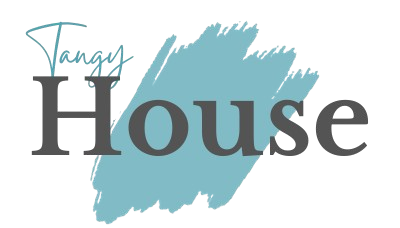Sustainable luxury in Dubai is changing into compliance rather than a concept.
An interior design company Dubai professionals rely on now plays a major role in aligning aesthetics with sustainability.
In the case of luxury developers like Alba Homes, this implies that interior specifications need to provide quantifiable contribution – not green aesthetics.
The policy floor (what’s mandated)
- Dubai – Al Sa’fat (Green Building System): The system of Dubai Municipality provides minimum standards in energy, water, materials and indoor air quality of new structures; the latest (2nd ) edition and Practice Guide elaborate on IAQ provisions and materials requirements (e.g. low emitting finishes).
- Ras Al Khaimah – Barjeel: The buildings approved in Barjeel will use approximately 30 percent less energy and water than buildings of average sizes and the program is scaled: In 2023, over 1,100 buildings were commissioned to Barjeel (considering an average of over 700 buildings were commissioned in 2022).
Why interiors matter in the UAE climate (hard load numbers)
UAE-based research peer-reviewed indicates that on average, about 40 per cent of electricity is spent on air-cooling, but increased to about 60 per cent during summer months.
Interior options that reduce solar gain enhance daylight and lessen interior loads have an overweight influence.
Up to 70 percent of electricity at peak can also be used for cooling as noted by the regional reporting.
Market proof: district-scale certifications
Expo City Dubai has audited proofs: the master plan has been pre-certified LEED Cities and Communities (Platinum) and WELL Community and all 123 permanent constructions are LEED-certified (7 Platinum, 105 Gold, 9 Silver).
It is rare to see luxury areas of the public can satisfy such demanding performance standards.
Materials & finishes with quantifiable impact (UAE examples you can specify)
Recycled & circular surfaces (locally made).
- Alchemy panels: UAE-manufactured, 100 percent recycled plastic panels comprising marine and construction LDPE waste, used for decorative walls, counters, and joinery facades instead of virgin composites (Industry media documents the product and local sourcing.)
- Dubai captures credit upon recycled content and material transparency on submittals; the Al Sa’fat guide defines evidence pathway of materials/IAQ.
Low-/no-VOC coatings, sealants and adhesives.
In order to comply with Al Saafat IEQ requirements, the interiors must indicate certified low-emitting paints, adhesives and carpets that serve as a direct route to healthier indoor air and provide code credits, not to be sacrificed for luxury finishes.
High-reflectance interior palettes + cool-surface strategy
A 2024 Dubai study on high-albedo surfaces reports cooling-load reductions of ~13.1 kWh/m² (low-rise residential, roof albedo 0.8), demonstrating the power of reflectance in hot climates.
Translating this to interiors: pair light-LRV wall/ceiling finishes with automated shading and efficient lighting to reduce both cooling and lighting energy.
Certified wood & reclaimed timbers.
Al Sa’fat promotes resource efficiency in materials: indicating FSC-certified joinery and re-purposed hardwood characteristics fulfils the luxury desires and minimises embodied effects (recorded in EPDs and chain of custody.
Engineered stone with recycled glass / recycled-content metals.
Replacing imported, quarry-intensive marble with engineered slabs with recycled glass and recycled aluminium/brass trims maintains the high-end look and reduces the embodied carbon for yet another time, checked through product EPDs on Al Saafat/LEED analysis.

Waste and circularity (regional performance data you can align to)
Where internal fit-outs can deploy the needle is waste.
BEEAH has documented 76% of municipal waste diversion in Sharjah, and it has been achieved with high-quality recycling facilities (C&I plant, AI/robotics sorting and a larger materials recovery complex).
It is also viable to set project-level C&D diversion plans to correspond with this benchmark (>70) in the UAE supply chain at present.
What “sustainable luxury” looks like in a Dubai spec (measurable, not cosmetic)
- Lighting & controls
- Seek light with occupancy + daylight sensors in all LED: common savings in UAE pathways of code leads to the overall reduction of approximately 30 percent of the building of the whole building under Barjeel-like structures (and similar Al Sa’fat credits).
- Glazing + interior shading
- Glazing Low-e and motorized interior shades to reduce solar heat gain that contributes to the 40-60% cooling share – a first-order effect in the UAE
Bottom line for Alba Homes
In a city where cooling can cost an average of 40 percent of the electric power (up to 60 percent in the summer season; highest readings have been documented at 70 percent), an interior is no longer mere ‘finish work’; it is a performance system.
Pair code-aligned materials (recycled, certified, low-VOC) with controls and high-LRV palettes to cut loads and publish outcomes like Expo City (LEED/WELL).
Smart material and design choices by a Dubai interior company can significantly reduce solar gain, improve daylight, and lower interior loads.
Having achieved the anticipated savings of about 30 percent with Barjeel, sustainable luxury in Dubai is a matter of numbers- and now the figures speak in the favour of the designer.
Euphoria Interiors
Address: M-08, Al Gurg Building, Umm Hurair, Dubai, UAE
Phone: +971-44902111
Email: [email protected]
Website: https://www.euphoriainteriors.com/



